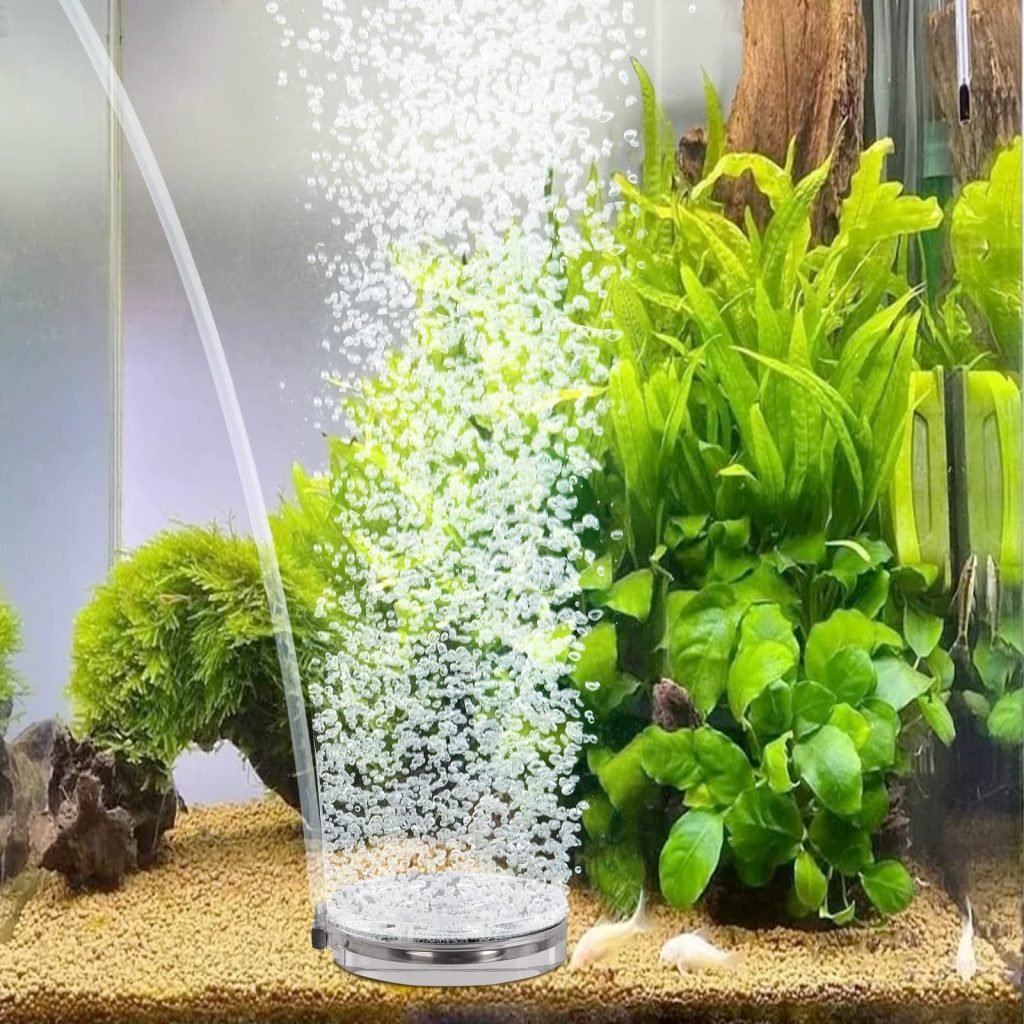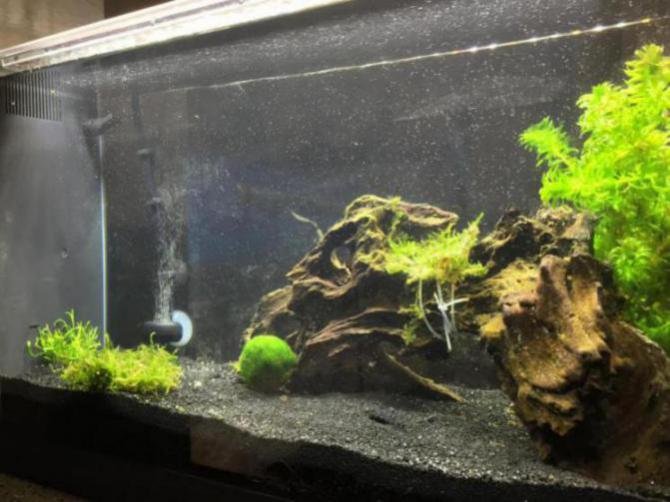Guppy Water pH Level
Today I’ll teach you everything you need to know about guppy water pH levels.
Without long intros, let’s get started.
Guppy Water pH Level
Your guppies need pH levels between 7-8 to thrive. You can figure out your pH levels by using a testing kit or getting an electronic meter.
Your pH Is Too Low (Under 7)
Why It happens
- High levels of carbon dioxide
- Organic waste accumulation
- Tank decor like peat moss or driftwood
- Water softening agents- like chemical treatments designed to prep water
To Fix Low pH
Add crushed coral or limestone, or use a small amount of baking soda or use a commercial pH balancer product.
Your pH Is Too High (Over 8)
Why It happens
- You’re using untreated tap water
- Lack of Carbon Dioxide
- Substrates like crushed coral or limestone
- Alkaline Decorations like driftwood
- Your tank wasn’t cycled properly
To Fix High pH
Add peat moss, use commercial pH-lowering products, and/ or reduce aeration in the tank to lower it.
What Is pH In Guppy Water?
The scale is determined by the concentration of hydrogen ions it contains, with anything below 7 being acidic, and anything above it being alkaline.
When you check your guppy’s water pH level, you want it to be between 7 and 8.
Why Measure pH in a Guppy Tank?
Measuring your guppy water’s pH levels is important because:
Guppy Health
Guppies have specific pH preferences for optimal health. Maintaining the right pH level helps prevent stress, disease, and other health issues.
Chemical Reactions
pH affects the solubility of minerals and chemicals in the water, which can impact water hardness, nutrient availability, and the effectiveness of water treatments.
Biological Balance
pH influences the performance of beneficial bacteria in the nitrogen cycle, which is critical for maintaining water quality and preventing toxic ammonia buildup.
What If You Don't Measure Your pH
Here are a few of the negative effects that pH that is too low/ high can cause your tank:
Fish Stress and Health Issues: Fish may become stressed, susceptible to diseases, and may exhibit abnormal behaviors or reduced breeding activity.
Nutrient Imbalances: Altered pH can affect the availability of essential nutrients, impacting the health of plants and aquatic organisms.
Toxicity: Extremely high or low pH can make certain compounds, like ammonia or heavy metals, more toxic to fish.
Altered Water Chemistry: Changes in pH can influence water hardness, impacting the overall water chemistry and potentially harming aquatic life.
Nitrogen Cycle Disruption: A significant pH shift can disrupt the nitrogen cycle, leading to ammonia and nitrite spikes, posing a severe threat to your fish.
Guppy Water pH Levels Too High (>8)
Why Your Guppy Water pH Levels Are Too High
There are a couple of reasons why you might be experiencing high pH in your guppy tank.
Mineral-Rich Substrates
Certain types of aquarium substrates, like crushed coral or limestone gravel, can release minerals into the water, causing a gradual rise in pH.
Untreated Water
If your tap water naturally has a high pH, using it in your tank can elevate the pH levels. This is especially common in areas with limestone or high mineral content in their water sources.
You should be pre-conditioning your water anyway, mainly because tap water contains bleach- which is deadly to fish. It weakens their immune system and opens the door to many guppy diseases.
Alkaline Decorations
Decorations are often overlooked aspects when it comes to your guppy water pH levels. Rocks, shells, or driftwood containing buffering minerals can influence the pH when placed in your tank.
How To Fix High pH Levels
Water Change
Start with replacing 50% percent of the water. Remember to replace your water with conditioned water to remove chlorine and balance the pH.
That should give a semi-instant relief to your guppies.
Substrate and Plants
Now that you’ve cahnged your water let’s look at the decoration in your tank.
If you’re using limestone or crushed coral- consider swapping them for sand or gravel. If you have a lot of driftwood in the tank or don’t want to part with your current substrate you may be able to balance it out with aquarium plants.
Check Your Filter
Because high pH can be caused by high aeration of the tank it would make sense to look at your filter.
If you have an air stone or your filter is configured to create a lot of current and surface agitation you may need to adjust those settings and see if that is why you have high pH in your guppy tank.

If Your pH Is Too Low (<7)
Why Your Guppy Water pH Levels Are Too Low
Just like high pH, low pH is a result of an imbalance in your tank. Let’s take a moment and explore why that might happen:
Dirty Tank and Peat Moss
One of the biggest reasons why you might have low pH in your guppies’ tank water is too much sediment on the bottom of the tank. And by sediment I mean poop and leftover food.
When you do your water changes make sure to clean the bottom too. This can be done a siphon pump.
Another thing that might be throwing your balance off is peat moss. Peat moss is an earthy substrate, but it is also known for making the water acidic.

Untreated Water
You should never be using pure tap water in your fish tank. We’ve mentioned before that tap water has chlorine that is harmful to fish- which is the main reason we use a water conditioner.
Water conditioners do more than just make the water safe- they also balance the pH and provide nutrients- but that’s a different topic.
Uncycled Tank
This one goes back to setting up your tank correctly before putting your fish in. It can take up to 2 weeks to cycle your fish tank to become balanced and avoid crashes.
How To Fix Low Guppy Water pH Levels
Tend to the Bottom Of The Tank
Since low pH is a result of rising ammonia (which is a result of a dirty tank bottom) you’d want to give the bottom of the tank a good cleaning. A 10-dollar siphon pump can make it a very simple task.
If you are using peat moss as a substrate, and willing to part with it- that’s plan A. You can balance it’s acidity with driftwood instead of parting with it.
Increase Aeration
Increased aeration and water circulation can help off-gas carbon dioxide and raise pH levels. Air stones or adjusted filter outflows can do the trick, otherwise, you can plant some plants to help get the job done.
Baking Soda
To give your guppies some instant relief you can add baking soda to the tank to lift the pH.
Dissolve 1 teaspoon of baking soda for every 5 gallons of water. The key to making this work is to add this solution slowly and let your guppies adjust. Replace a gallon at a time and give them about an hour between gallons to adjust.
